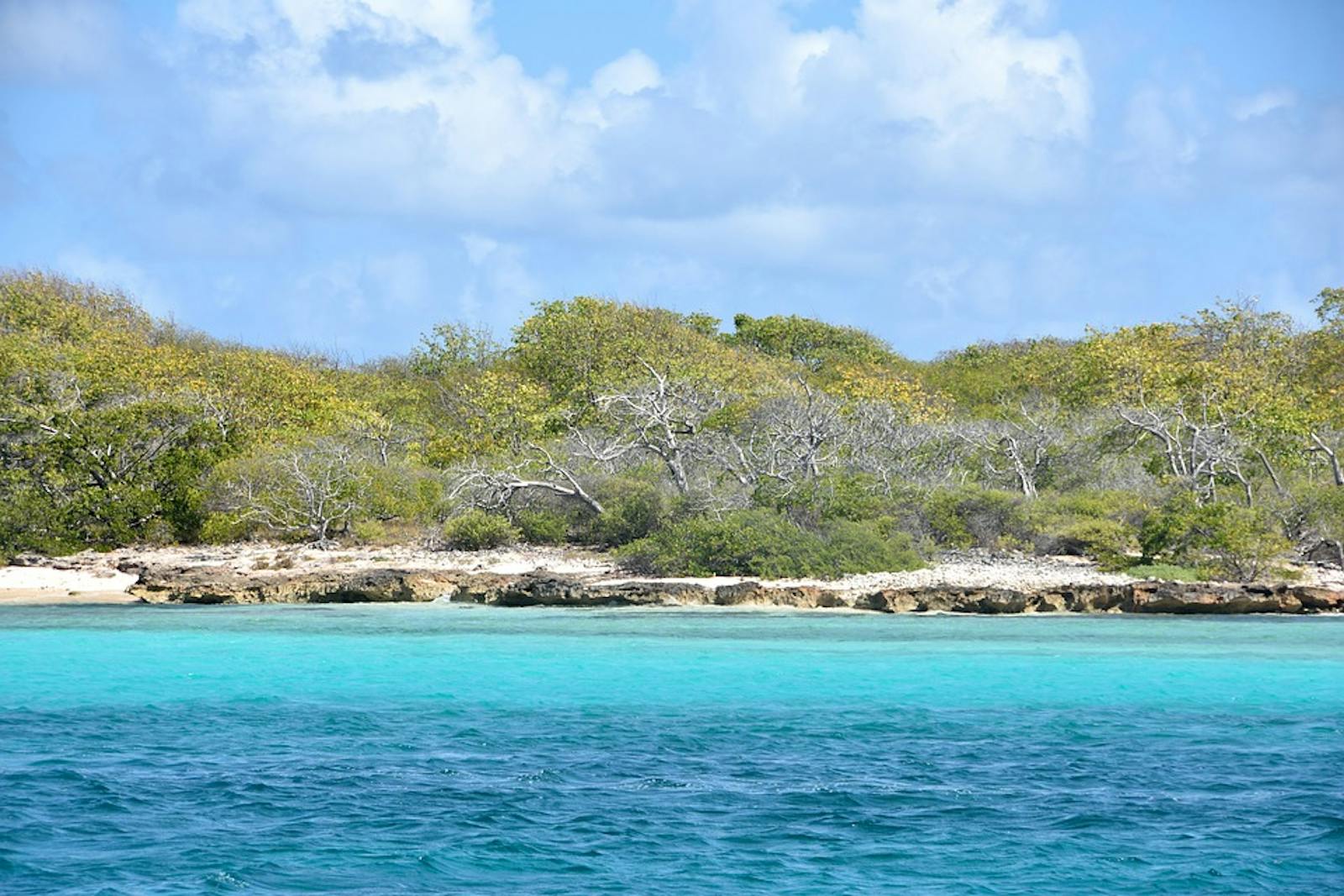Caribbean Shrublands
The ecoregion’s land area is provided in units of 1,000 hectares. The protection goal is the Global Safety Net (GSN1) area for the given ecoregion. The protection level indicates the percentage of the GSN goal that is currently protected on a scale of 0-10.
Bioregion: Caribbean Islands (NT26)
Realm: Central America
Ecoregion Size (1000 ha):
314
Ecoregion ID:
599
Conservation Target:
74%
Protection Level:
4
States: France, Barbados, Antigua and Barbuda, Curaçao, United States Virgin Islands, Dominica, Netherlands, British Virgin Islands, Anguilla, Sint Maarten, Saint Martin, Aruba, Saint Vincent and the Grenadines, Saint Kitts and Nevis, Montserrat, Saint Lucia, Grenada
The critically endangered Grenada dove is found in mature dry scrub lowlands and hillsides within the Caribbean Shrublands ecoregion. It is endemic to Grenada, part of the Windward Islands, where it is the national bird and has been a focus of environmental education in schools and ecotourism; it is even featured on stamps. The species characteristically has a white throat with pink shading on the face and is considered to be one of the rarest doves in the world—due to habitat fragmentation and destruction as well as predation by exotic species, probably fewer than 100 individuals remain on the islands.
The Cayman Islands (Grand Cayman, Little Cayman, and Cayman Brac) were uplifted from the ocean floor 10 million years ago and have never been connected to adjacent land masses. The Cayman group is subject to strong trade winds and has a humid tropical climate with a distinct wet season from May to November. Xeric scrub habitat is also found on the Windward islands; this includes all of Barbados and coastal portions of Trinidad, Grenada, St. Lucia, Martinique, and Dominica. They receive around 1,000–16,000 mm of rainfall annually.
Also included in this ecoregion are the Leeward Islands, specifically most of Grande Terre and Marie-Galante of Guadeloupe, Antigua, Anguilla, St. Martin, St. Barthelemy, Saba, and the eastern portions of the US and British Virgin Islands. The main hurricane track passes through these islands.
The vegetation of this ecoregion is seral in character, ranging from herbaceous strand vegetation to scrublands, savannas, and littoral woodland. This ecoregion is commonly found along the coastal areas on all of these islands, its extent determined by the extent of human impact in each location. Together all these islands make up the Caribbean Shrublands ecoregion.
.jpg)
The flagship species of the Caribbean Shrublands ecoregion is the Grenada dove. Image credit: Creative Commons
The Cayman Islands provide for 26 species of herpetofauna, 75% of which are endemic to its xeric vegetation. Their only endemic bird, the Grand Cayman thrush, recently went extinct. The only endemic bird in the Windward Islands is the critically endangered Grenada dove. In nearby Barbados, endemic lizards include Barbados leaf-toed gecko and the Barbados anole (recently introduced to St. Lucia and Bermuda). Barbados also had an endemic species of snake, the Barbados racer, but it has gone extinct. In the Leeward Islands and throughout much of the larger ecoregion, bats are the most common mammal.
The Cayman Islands government has set up a National Trust whose mission is to preserve the natural and cultural heritage of the islands, which are also the most at-risk area of the ecoregion. Many of the Windward Islands have rugged topography constraining human settlements and agriculture. Thus, human populations are highest in coastal areas, many of which are Xeric Scrub habitats.
The ecoregion’s presence in Leeward Island has numerous governmental agencies overseeing local conservation and management. Protected areas include the Virgin Islands Biosphere Reserve and 12 additional proposed parks.
The two greatest threats for all the islands within the Caribbean Shrubland ecoregion are habitat loss and introduced species. Very little woodland remains in the Caymans, and what little is left of the native evergreen thickets on Grand Cayman are now being replaced by logwood, an introduced species. Recent declines in the populations of iguanas and other reptiles throughout the Cayman Islands have been linked to the increased number of domestic cats and dogs on the islands.
The Windward Islands have suffered a long history of environmental degradation, chief among them the cultivation of tobacco and sugar cane. Introduced mongoose prey on many of the native lizard species. The clearing of hillside trees and scrub on Leeward Island for the construction of roads and building sites has resulted in severe soil erosion. Uncontrolled and illegal beach sand mining along parts of this ecoregion, in conjunction with uncontrolled sewage disposal from beachfront hotels, degrades many habitats.
The priority conservation actions for the next decade will be to 1) increase the number of protected areas throughout what little intact habitat is left of the Caribbean shrubland ecoregions, 2) remove introduced species, and 3) enact stringent resource regulation and resource conservation measures.
-
-
1. Armstrong, S. 2019. Island group in the southeast Caribbean. https://www.worldwildlife.org/ecoregions/nt1317 Accessed June 27, 2019.
2. Armstrong, S. 2019. Islands of the Lesser Antilles in the Caribbean https://www.worldwildlife.org/ecoregions/nt1310 Accessed June 27, 2019.
3. Roberts, W. 2019. Cayman Islands in the Caribbean https://www.worldwildlife.org/ecoregions/nt1305 Accessed June 27, 2019. -
Cite this page: Caribbean Shrublands. Ecoregion Snapshots: Descriptive Abstracts of the Terrestrial Ecoregions of the World, 2021. Developed by One Earth and RESOLVE. https://www.oneearth.org/ecoregions/caribbean-shrublands/
-



